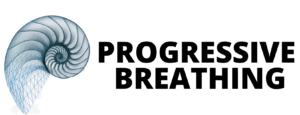Oxygen Saturation Levels in the Body
What Are Oxygen Saturation Levels?
Oxygen saturation (SpO₂) refers to the percentage of hemoglobin in the blood that is saturated with oxygen. Hemoglobin is a protein in red blood cells responsible for transporting oxygen from the lungs to tissues and organs, and returning carbon dioxide to the lungs for exhalation. Optimal oxygen saturation levels typically range from 95% to 100% in healthy individuals, measured using a pulse oximeter.
Why Do Oxygen Saturation Levels Change?
- Respiratory Efficiency:
- Adequate oxygen uptake depends on effective lung function and the ability of alveoli to exchange oxygen and carbon dioxide.
- Conditions like asthma, COPD, or pneumonia can impair this exchange, reducing oxygen saturation.
- Altitude:
- At higher altitudes, reduced atmospheric oxygen can lower oxygen saturation due to diminished oxygen availability.
- Circulatory Issues:
- Poor blood flow or conditions like anemia can decrease oxygen transport, affecting saturation levels.
- Physical Activity:
- During intense exercise, oxygen consumption increases. If oxygen demand exceeds supply, temporary decreases in saturation may occur.
- Nasal vs. Mouth Breathing:
- Nasal breathing is more efficient, promoting better oxygen exchange and nitric oxide production. Mouth breathing can reduce these benefits.
- Stress and Anxiety:
- Stress-induced hyperventilation can lower CO₂ levels in the blood (hypocapnia), reducing oxygen delivery to tissues due to the Bohr effect.
How Oxygen Saturation is Regulated:
The body maintains oxygen levels through:
- Breathing Rate and Depth: Controlled by the medulla oblongata, responding to CO₂ and pH levels.
- Hemoglobin Binding: Oxygen binds to hemoglobin more readily in high-oxygen environments (lungs) and releases it in low-oxygen environments (tissues).
- Nitric Oxide: Enhances blood vessel dilation, improving oxygen delivery to tissues.
Nitric Oxide Production in the Body
What is Nitric Oxide?
Nitric oxide (NO) is a gaseous signaling molecule that plays a critical role in vascular health, immune response, and cellular communication. It is a vasodilator, meaning it relaxes blood vessels to improve circulation and oxygen delivery.
How Nitric Oxide is Produced Through Slow, Deep, Rhythmic Nasal Breathing
Nitric oxide (NO) is a naturally occurring gas in the body with powerful effects on health, especially for circulation, immunity, and cellular signaling. During slow, deep, rhythmic nasal breathing, NO is produced and released in the following ways:
- Production in the Nasal Sinuses:
- The paranasal sinuses produce nitric oxide, which is released into the nasal passages during breathing.
- Nasal breathing carries this NO-rich air into the lungs, enhancing oxygen absorption and blood vessel dilation.
- Role of Shear Stress:
- Deep breathing creates a consistent flow of air through the nasal passages, increasing “shear stress” on the endothelial cells lining blood vessels.
- This stimulates the production of nitric oxide in the endothelial cells, promoting vasodilation and improved blood flow.
- Activation Through Rhythmic Breathing:
- Slow, rhythmic breathing encourages optimal gas exchange and a calm nervous system state, which enhances NO release.
- Nasal breathing filters, warms, and humidifies the air, further optimizing conditions for NO utilization.
Benefits of Nasal-Breathing-Induced Nitric Oxide
- Increased Oxygen Delivery: NO improves blood flow and enhances oxygen delivery to tissues.
- Antimicrobial Effects: It helps combat pathogens in the airways.
- Relaxation: It promotes parasympathetic nervous system activation, reducing stress and improving cardiovascular health.
By consistently practicing slow nasal breathing, the body’s nitric oxide levels are naturally optimized, supporting overall health and vitality.
How and Where is Nitric Oxide Produced?
Nitric oxide is synthesized in various parts of the body through two main pathways:
- Enzymatic Production:
- Enzyme: Nitric Oxide Synthase (NOS).
- Process: NOS converts the amino acid L-arginine into nitric oxide and L-citrulline, using oxygen and cofactors (e.g., NADPH, tetrahydrobiopterin).
- Locations:
- Endothelial Cells: Regulates blood vessel tone and blood flow.
- Neuronal Cells: Functions in neurotransmission.
- Immune Cells: Assists in pathogen destruction.
- Non-Enzymatic Pathway:
- Dietary nitrates (found in leafy greens, beets, etc.) are reduced to nitrites by oral bacteria. In acidic stomach conditions, nitrites convert to nitric oxide.
- This pathway is particularly important when oxygen availability is low.
Postulating the Theory: Breathing in Electricity
Hypothesis:
Breathing is not merely a mechanical process of oxygen and carbon dioxide exchange but also an energetic process involving the intake of subtle electromagnetic or electrical forces from the environment. Oxygen and nitric oxide may result from bio-alchemical processes within the body.
Supporting Evidence for the Theory:
- Electromagnetic Nature of Air:
- The atmosphere is charged with ions (positive and negative) that interact with the body. Breathing may facilitate the absorption of these charged particles.
- Cellular Respiration and Bioelectricity:
- Mitochondria generate energy (ATP) through oxidative phosphorylation, a process involving the flow of electrons. This suggests a direct link between oxygen metabolism and electrical activity.
- Nitric Oxide as a Conductor:
- Nitric oxide’s role in vasodilation can be likened to a circuit regulator, enhancing the flow of blood (carrying charged ions) and promoting bioelectric communication.
- Nasal Breathing and Energy Absorption:
- Nasal breathing promotes the production of nitric oxide, which enhances oxygen uptake and may also amplify the body’s ability to harness environmental energy through increased surface area and contact with charged particles in the nasal cavity.
The Alchemy of Oxygen and Nitric Oxide:
- Atmospheric Elements:
- The air contains more than just oxygen and nitrogen; trace gases, ions, and subtle energies contribute to the composition.
- Human Transmutation:
- The lungs act as a crucible where oxygen interacts with hemoglobin, creating a chemical-electric exchange.
- Simultaneously, nitric oxide produced in the sinuses acts as a catalyst, enhancing oxygen diffusion and blood flow.
- Body’s Energy Field:
- The human body is surrounded by an electromagnetic field (the aura). Breathing may synchronize this field with atmospheric energy, optimizing cellular and neurological function.
Implications of This Theory:
- Health: Breathing techniques that maximize nasal intake and slow, deliberate exhalation could optimize energy absorption and alchemical processes.
- Spirituality: Breathwork practices align with ancient wisdom, viewing the breath as a conduit for prana (life force) or qi.
- Science and Alchemy: The interplay of oxygen, nitric oxide, and electrical energy reflects a modern understanding of ancient alchemical principles, where the body is seen as a living laboratory transforming air into life-sustaining energy.
By expanding our perspective, we see breathing not just as a physical act but as an intricate dance of chemistry, electricity, and vitality, making it central to our existence and evolution.
What is Hemoglobin Comprised Of?
Hemoglobin is a vital protein in red blood cells responsible for transporting oxygen from the lungs to tissues and carrying carbon dioxide back to the lungs for exhalation. It consists of two main components:
- Globin Proteins:
- Hemoglobin is made up of four polypeptide chains (two alpha and two beta chains in adults, referred to as hemoglobin A).
- These chains are folded to create a protein structure that binds to the heme group.
- Heme Group:
- Each polypeptide chain is associated with a heme group, which contains an iron ion (Fe²⁺).
- The iron ion in the heme is the binding site for oxygen, allowing one hemoglobin molecule to carry up to four oxygen molecules.
The combination of globin and the heme group enables hemoglobin’s unique function in gas exchange and its role in maintaining pH balance in the blood.
Where is Plasma Found in the Blood?
Plasma is the liquid component of blood, making up about 55% of total blood volume. It is a clear, yellowish fluid that suspends blood cells (red cells, white cells, and platelets) and serves as a medium for transporting nutrients, hormones, and waste products.
- Composition of Plasma:
Plasma consists of:
- Water (about 90%): Acts as a solvent and regulates temperature.
- Proteins (7%): Includes albumin, globulins, and fibrinogen for clotting, immune response, and maintaining osmotic pressure.
- Electrolytes, nutrients, and hormones (3%): Essential for cellular function and homeostasis.
Additionally, plasma surrounds blood cells and serves as the medium for their movement through the cardiovascular system.
Electromagnetic Properties of Plasma
Plasma in blood, although biologically distinct from plasma in physics (ionized gas), has notable electromagnetic characteristics:
- Ion Conductivity:
Firstly, blood plasma contains electrolytes like sodium (Na⁺), potassium (K⁺), calcium (Ca²⁺), and chloride (Cl⁻), making it a conductor of electricity. These ions enable plasma to transmit electrical signals essential for physiological functions, such as nerve impulses and muscle contractions.
- Charge Separation:
Secondly, the movement of charged ions in plasma creates electric currents, which can interact with magnetic fields in the body. This is critical for bioelectric phenomena like heart rhythms and brain activity.
- Interaction with Electromagnetic Fields (EMFs):
Thirdly, plasma’s conductivity allows it to respond to external electromagnetic fields, which can influence cellular processes and blood flow. This interaction is a topic of exploration in therapies like PEMF (pulsed electromagnetic field therapy).
Theoretical Perspective: Plasma as an Electromagnetic Medium
Furthermore, in esoteric and energetic models:
- Plasma in the blood is viewed as a medium that transmits life force or Qi.
- Its ionic nature is believed to bridge biochemical processes with subtle electromagnetic energies, potentially linking physical functions to higher energetic states.
- The iron in hemoglobin, a conductor of electricity, could amplify this interplay, particularly as it interacts with the Earth’s magnetic field.
This dual understanding highlights plasma’s role in maintaining both physical and energetic balance in the body. Let me know if you’d like a deeper dive into any specific aspect!
Find 3 Free Nasal Breathing Practices to enhance Oxygen Saturation Levels and Nitric Oxide Production.



